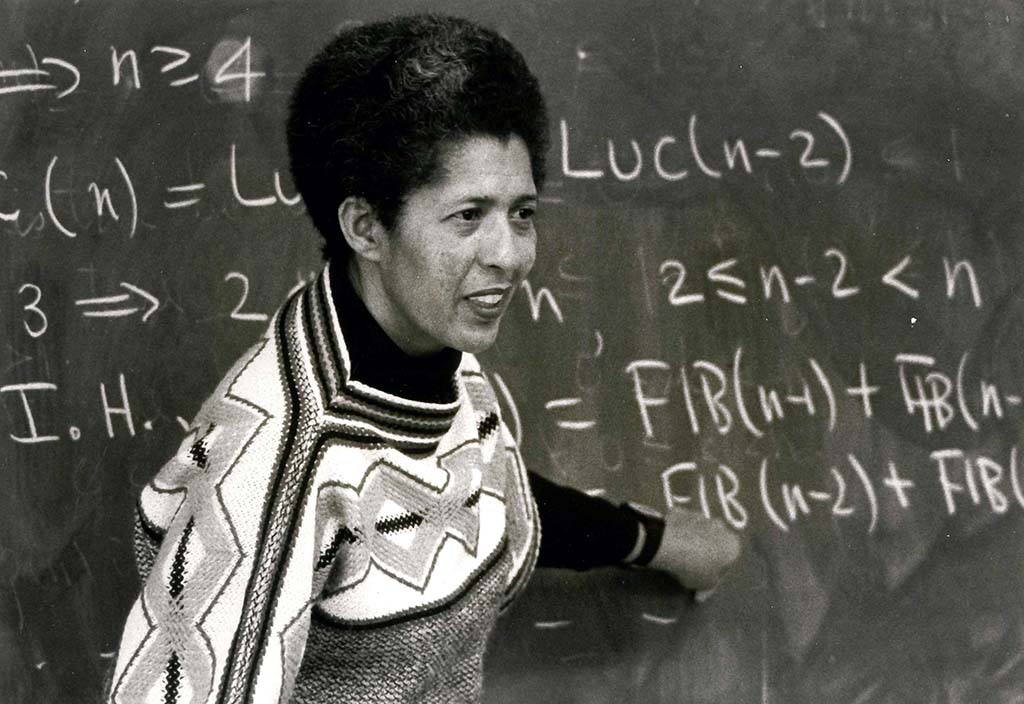Born October 26, 1935 in Sumter, South Carolina, Gloria Conyers Hewitt grew up persistent. Her father, Emmett C. Conyers, and her mother, Crenella Conyers, thought that their children should attend college as they believed that was the only opportunity for improvement for African Americans.
While originally entering Fisk University in 1952 to become a nurse, Hewitt, with the encouragement of Lee Lorch, the Mathematics Department Chair, was persuaded to take calculus for the first time during her sophomore year. In her sophomore year, on May 28, 1954, Hewitt also married Ronald Hewitt and the couple had a son, Randy Lattimore Hewitt. While juggling her family and school responsibilities and with her parents’ help and her professors’ support, Hewitt graduated with a degree in mathematics from Fisk University in 1956, intending to be a high school math teacher.
With Lorch’s recommendation and guidance, Hewitt instead pursued a master of science degree from the University of Washington, which she completed in 1960. Hewitt then took an assistant professor of mathematics position in 1961 with the University of Montana in Missoula. While teaching in Montana, Hewitt finished her Ph.D. in mathematics from the University of Washington in 1962. Her dissertation, titled Direct and Inverse Limits of Abstract Algebra was written under the direction of Dr. Richard Pierce. She was only the third African American woman in the nation to earn a Ph.D. in this field. After her Ph.D., Hewitt remained at the University of Montana, becoming an associate professor in 1966 and a full professor in 1973. Hewitt was promoted in 1995 to the chair of the Department of Mathematical Sciences, becoming the first black woman to lead a department at that institution. She retired from the University of Montana in 1999.
Hewitt has spent her career working to inspire her students and other young people to become mathematicians. She has contributed to the national Advanced Placement (AP) calculus curriculum and examinations, served on the executive council of Pi Mu Epsilon (a mathematical honors society), and on the committee responsible for the math section of the Graduate Record Exam (GRE), including serving as chair from 1984 to 1986. Hewitt was associated with other organizations regarding scholarship and academia including the National Association of Mathematicians, the American Mathematical Society, and the Mathematical Association of America (where she served as a visiting lecturer from 1964 to 1972).
Throughout her career, Hewitt has received awards for her efforts, research, and merit. The National Science Foundation recognized her with a postdoctoral fellowship, which facilitated her work at the University of Oregon for a year in 1966. Additionally, she received a Certificate of Appreciation from the Educational Testing Service (ETS). Hewitt has dedicated her life to making math more accessible and achievable. Her work and values have become examples for women of color in STEM fields everywhere.

